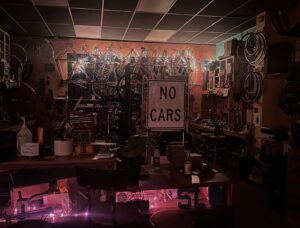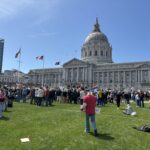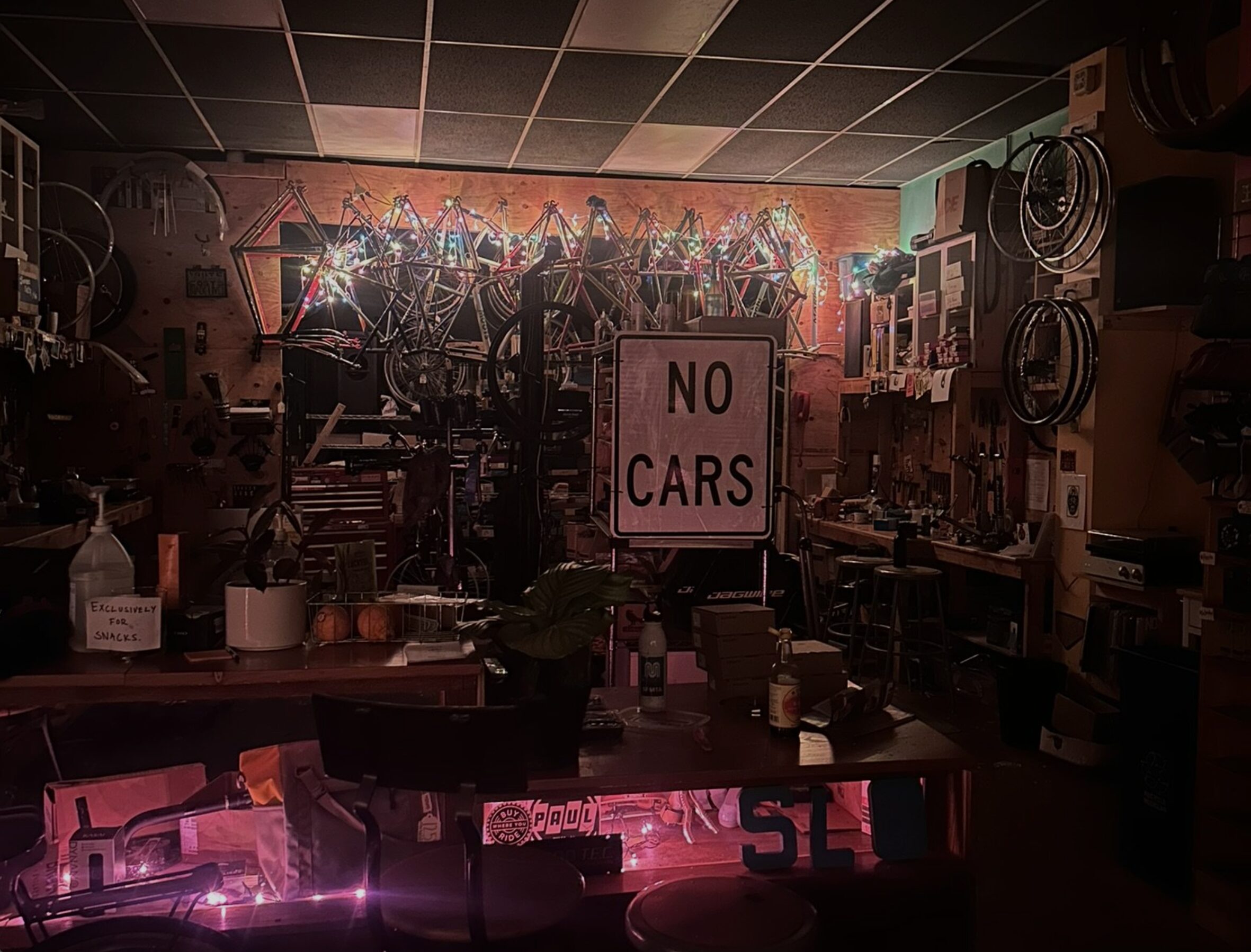On a cold morning in San Francisco’s Mission District, a cyclist cautiously maneuvers around a blocked bike lane, skirting past a double-parked delivery van.
Just a few seconds later, a car door swings open in their path, almost colliding with them. The cyclist swerves and yells at the driver before continuing their commute. Close calls like this are typical in SF, and many riders have grown accustomed to them.
SF has long asserted its dedication to environmentally friendly, human-centered transportation. Adopted in 1973, the Transit-First Policy pledged to prioritize public transit, bicycling, and walking over automobiles. However, more than 50 years later, many cyclists believe that promise has still not been fulfilled. Interviews conducted with local activists, bike shop owners, and students reveal a city where riders are in danger from infrastructure and political inaction.
According to California’s Statewide Integrated Traffic Records System (SWITRS), San Francisco averaged over 400 serious bicycle accidents annually over the past five years. In 2023 alone, the city recorded 372 bike accidents involving injury—including 40 involving serious injury or death. While this number has decreased due to the pandemic, the danger persists, especially in high-traffic areas like the Mission District and SoMa, which recorded the most bike crashes out of all SF neighborhoods.
SF has always struggled to stay true to its promises to the bike community. In the late 1960s, while cities across the country were already investing in bike infrastructure, San Francisco’s progress needed to be jump-started by community advocacy efforts. The city installed its first on-street bike lanes in 1971 on Lake Street, thanks to a neighborhood-led push for safer streets. But after that early momentum, development stalled for decades. It wasn’t until the explosive rise of bike activism in the 1990s—most notably the formation of the San Francisco Bicycle Coalition and the rise of Critical Mass—that real pressure forced the city to take action. In 1997 , SF finally begin striping its first official network of protected bike lanes, marking a turning point in what had been a sluggish and uneven journey toward cyclist safety.
Sara Brown, a representative of the San Francisco Bicycle Coalition stresses the importance of listening to the perspectives of bicyclists. “Politicians talk about being green and fighting climate change, but when it comes to actually designing streets, they still prioritize cars,” she said.

Small business owners like those at Scenic Routes Community Repair Shop, a local institution that supports cyclists and plans neighborhood rides, share this frustration. One bicyclist, in particular, claimed that parking always prevails when the city must decide between bike lanes and parking. “It’s like we are an afterthought,” he said.
Jay Beaman, the founder of Scenic Routes, echoes this concern.“There is absolutely no consequence for breaking the law in a motor vehicle in San Francisco. People speed and roll through stop signs constantly. I don’t think cops are the answer, but the total lack of enforcement definitely isn’t either,” Beaman said.
These conflicts are recognized by Adrian Leung, a transportation planner with the San Francisco Municipal Transportation Agency (SFMTA). At an advisory council meeting, Leung stated, “Everyone wants something different from the same stretch of pavement— sidewalk space, ADA [Americans with Disabilities Act] requirements, street vendors, local businesses.”
These concerns have grown louder in recent months. The failed center-running bike lane on Valencia Street, criticized by both businesses and bikers, left many frustrated with the SFMTA’s planning process. Riders complained about feeling stranded in the middle of traffic, while local merchants blamed the confusing design for a dip in foot traffic. The project is set to be returned to a sidewalk-running lane once again, but many feel the damage has already been done. Daniel Lurie’s election as mayor has also created uncertainty about the city’s bike infrastructure future. Some members of the cycling community fear that his business-aligned platform could further deprioritize street safety for bikers.

Despite these limitations, the SFMTA has invested in projects like the Vision Zero initiative which aims to eradicate all traffic fatalities by funding protected biking infrastructure. Areas have also been made more bike-friendly through initiatives like Slow Streets.
These policies haven’t, however, made bike commuters feel any less afraid. “There are a few dangerous streets on my commute,” Tzeviel Tenorio ’26, a student who rides his bike to school, stated. “There isn’t a bike lane where Ocean Street hits Mission. And you’re forced to go alongside trucks and buses,” he said.
San Francisco’s attitude towards biking is slowly improving, but the daily reality for bikers remains one of fear, frustration, and unpredictability. For many in the cycling community, the root of the problem lies in whose voices are prioritized. “I think we should stop listening to drivers,” Beaman said. “We should stop listening to people that are actively ruining San Francisco and every single city I’ve ever been in.” Until policymakers fully embrace the promise of the Transit-First Policy, cyclists will continue to deal with the risks of navigating this dangerous cityscape built for cars.
Young riders like Ethan Liu ’27, also expressed struggles with commuting. His experiences navigating unsafe intersections and sharing roads with inattentive drivers have shaped his view of urban cycling in San Francisco. “You shouldn’t have to be a brave person to ride a bike in San Francisco,” Liu said.






Super https://shorturl.fm/6539m